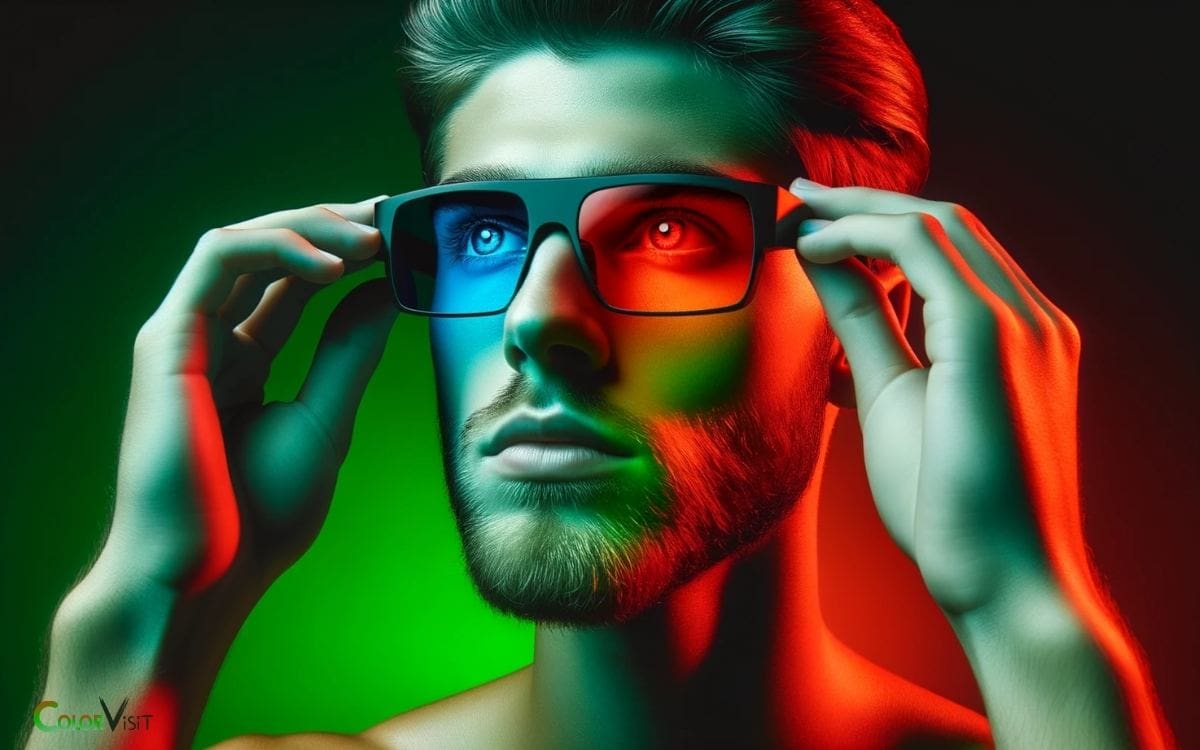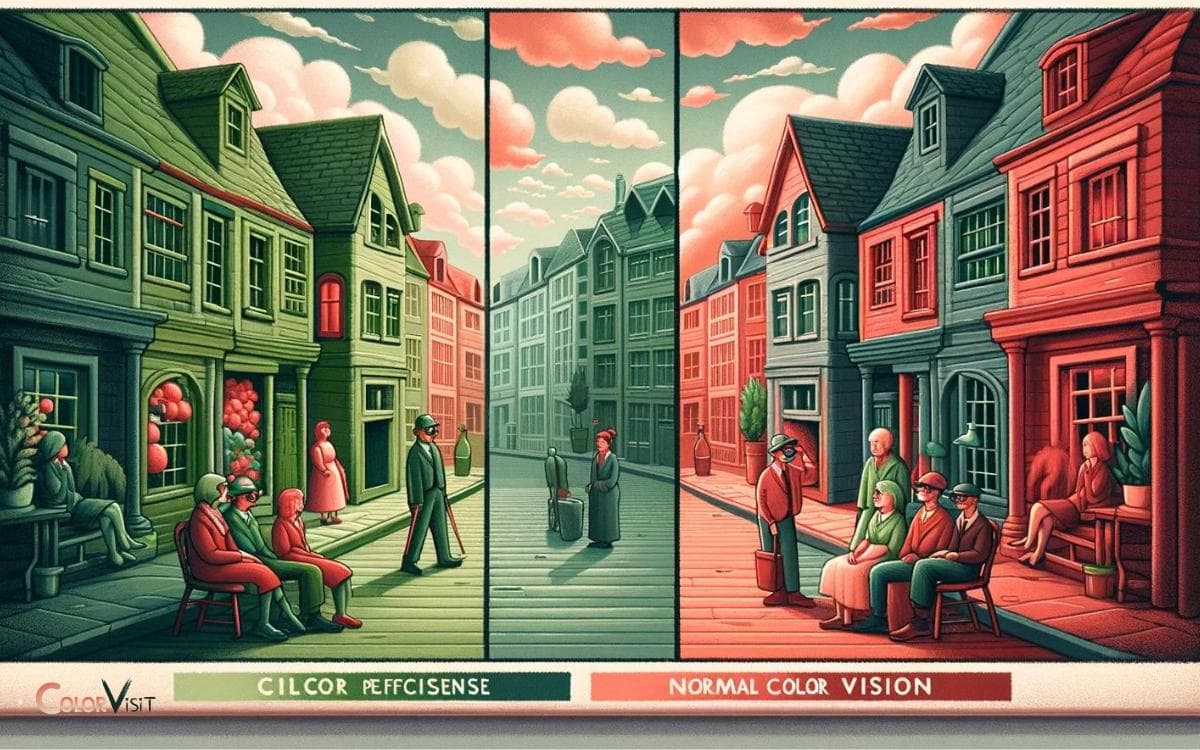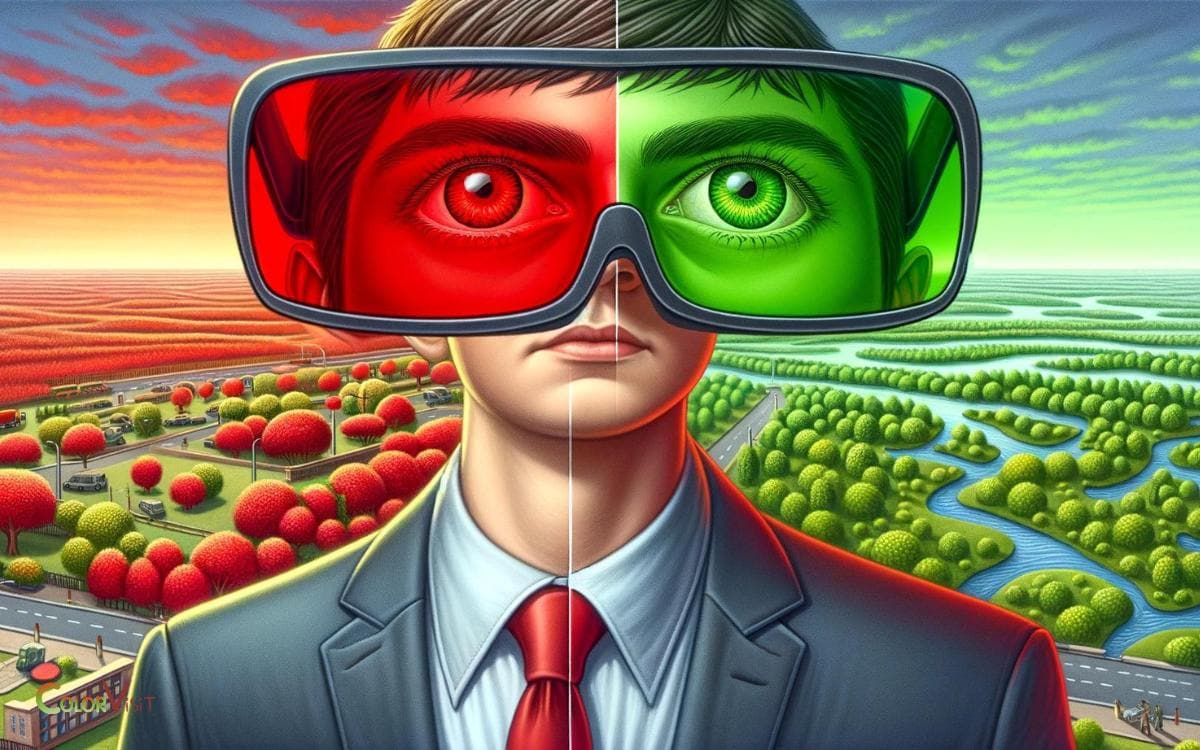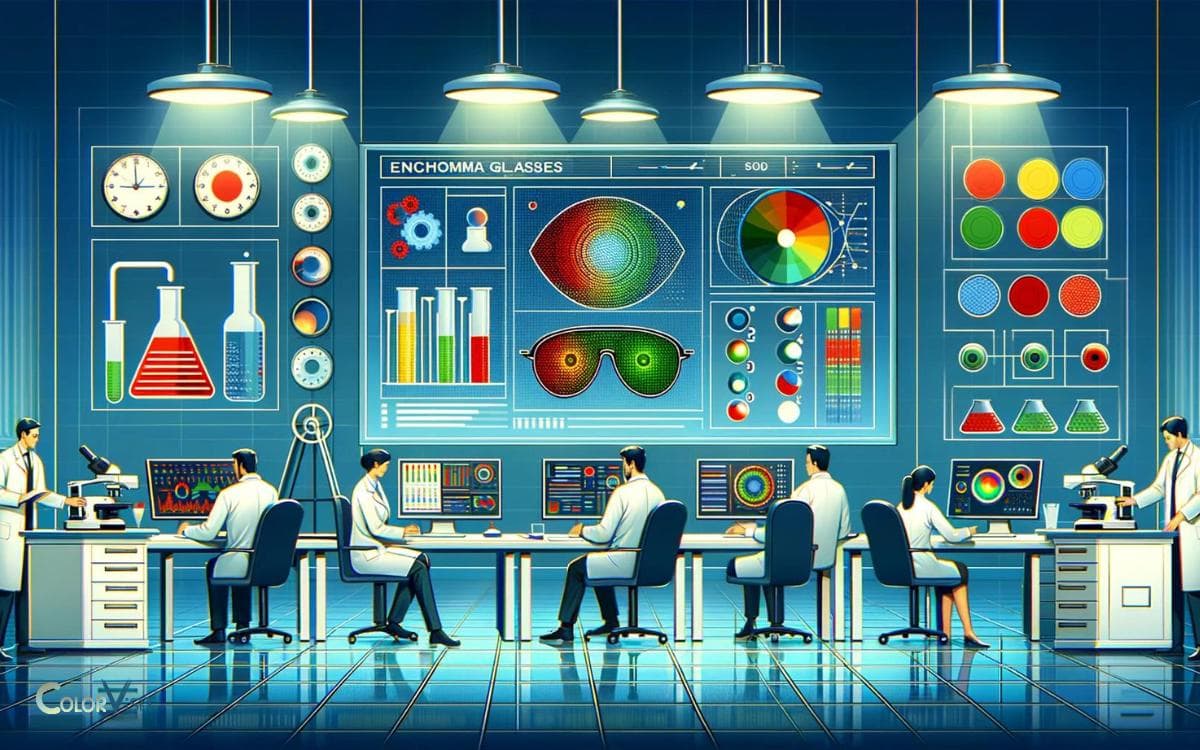Does Enchroma Glasses Work for Red Green Color Blindness?
Yes, Enchroma glasses do work for red-green color blindness. These glasses contain special spectral filter lenses designed to increase the saturation of red and green light.
Enchroma glasses use cutting-edge technology to enhance color perception for those with red-green color blindness.
They work by filtering out specific light wavelengths that interfere with the accurate perception of colors.
For instance, someone with red-green color blindness might see red and green as the same color.
But when they put on Enchroma glasses, they can distinguish between these two colors because the glasses filter out the wavelengths that were causing the confusion.
Enchroma glasses have transformed the lives of many with red-green color blindness, offering them an opportunity to see the world in a whole new light.
Key Takeaway
Understanding Red-Green Color Blindness
Red-green color blindness, affecting approximately 8% of men and 0.5% of women of Northern European descent, is a genetic condition that impairs the ability to distinguish between red and green hues.
- This deficiency is caused by an anomaly in the photopigments of the cone cells in the retina.
- Typically, these cone cells are responsible for perceiving color, with different types being sensitive to either red, green, or blue light.
- However, in individuals with red-green color blindness, the red and green photopigments overlap, leading to difficulty in differentiating between these two colors.
- As a result, affected individuals may have challenges in various daily activities, such as reading maps, identifying traffic lights, and appreciating certain art forms.
Understanding the physiological basis of this condition is crucial for the development of innovative solutions to improve the quality of life for those affected.
How Enchroma Glasses Work?
Enchroma glasses are designed to address the challenges faced by individuals with red-green color blindness by selectively filtering certain wavelengths of light to enhance the perception of color.
The glasses work by leveraging a unique optical filter technology that helps separate the overlapping red and green cones in the eyes, thereby enhancing the overall color discrimination and improving the perception of a broader spectrum of hues.
| Enhanced Color Perception | Reduced Color Confusion |
|---|---|
| Improved discrimination of certain colors | Minimized blending of red and green hues |
| Enhanced ability to differentiate between shades | Reduced difficulty in distinguishing between similar colors |
| Improved appreciation of vibrant colors | Enhanced perception of subtle color differences |
This technology enables wearers to experience a more comprehensive and vivid perception of the surrounding environment, allowing for a fuller and richer visual experience.
Scientific Research and Studies
Studying the effectiveness of Enchroma glasses for red-green color blindness has been the focus of numerous scientific research and studies.
The findings from these investigations have shed light on the potential benefits of Enchroma glasses for individuals with red-green color blindness.
Key insights from the research include:
- Objective Color Discrimination: Studies have demonstrated improvements in the ability of individuals with red-green color blindness to accurately discriminate between certain colors when wearing Enchroma glasses.
- Subjective Experiences: Research has also highlighted the subjective experiences of individuals wearing Enchroma glasses, including reports of enhanced color perception and an improved overall visual experience.
- Limitations: Some studies have noted limitations in the efficacy of Enchroma glasses for certain types and severities of color blindness.
- Continued Research: Ongoing scientific research aims to further explore the specific mechanisms and potential applications of Enchroma glasses for red-green color blindness.
Real Experiences and Testimonials
Individuals with red-green color blindness have reported notable experiences after using Enchroma glasses during various daily activities.
- Many express astonishment at the enhanced vibrancy and richness of colors in their surroundings.
- One individual described being able to distinguish between shades of green in nature for the first time, while another noted a newfound ability to perceive the subtleties of red hues in art and design.
- These testimonials align with the underlying mechanisms of Enchroma glasses, which utilize special optical filters to target the specific wavelengths that are challenging for individuals with red-green color blindness.
While individual experiences may vary, the overall consensus highlights the potential for Enchroma glasses to provide a transformative shift in color perception, offering hope and improved quality of life for those with red-green color blindness.
Considerations and Limitations
Having explored the real experiences and testimonials of individuals with red-green color blindness using Enchroma glasses, it is important to consider the potential considerations and limitations associated with this technology.
- Effectiveness: Enchroma glasses may not work for everyone with red-green color blindness, as effectiveness can vary based on the type and severity of color blindness.
- Cost: The cost of Enchroma glasses may be a limiting factor for some individuals, as they can be relatively expensive.
- Use Cases: Enchroma glasses may not be suitable for certain activities or environments, such as low-light conditions or specific color-critical tasks.
- Expectations: It’s crucial for users to have realistic expectations, as the glasses may not completely ‘cure’ color blindness but rather enhance color perception to varying degrees.
Conclusion
The effectiveness of Enchroma glasses for red-green color blindness is supported by scientific research and real-life experiences.
However, it is important to consider individual variations in color perception and the limitations of the glasses.
Symbolically, Enchroma glasses represent a step towards greater inclusivity and understanding of diverse visual experiences.
As research and technology continue to advance, there is hope for further developments in addressing color blindness and enhancing color perception.






